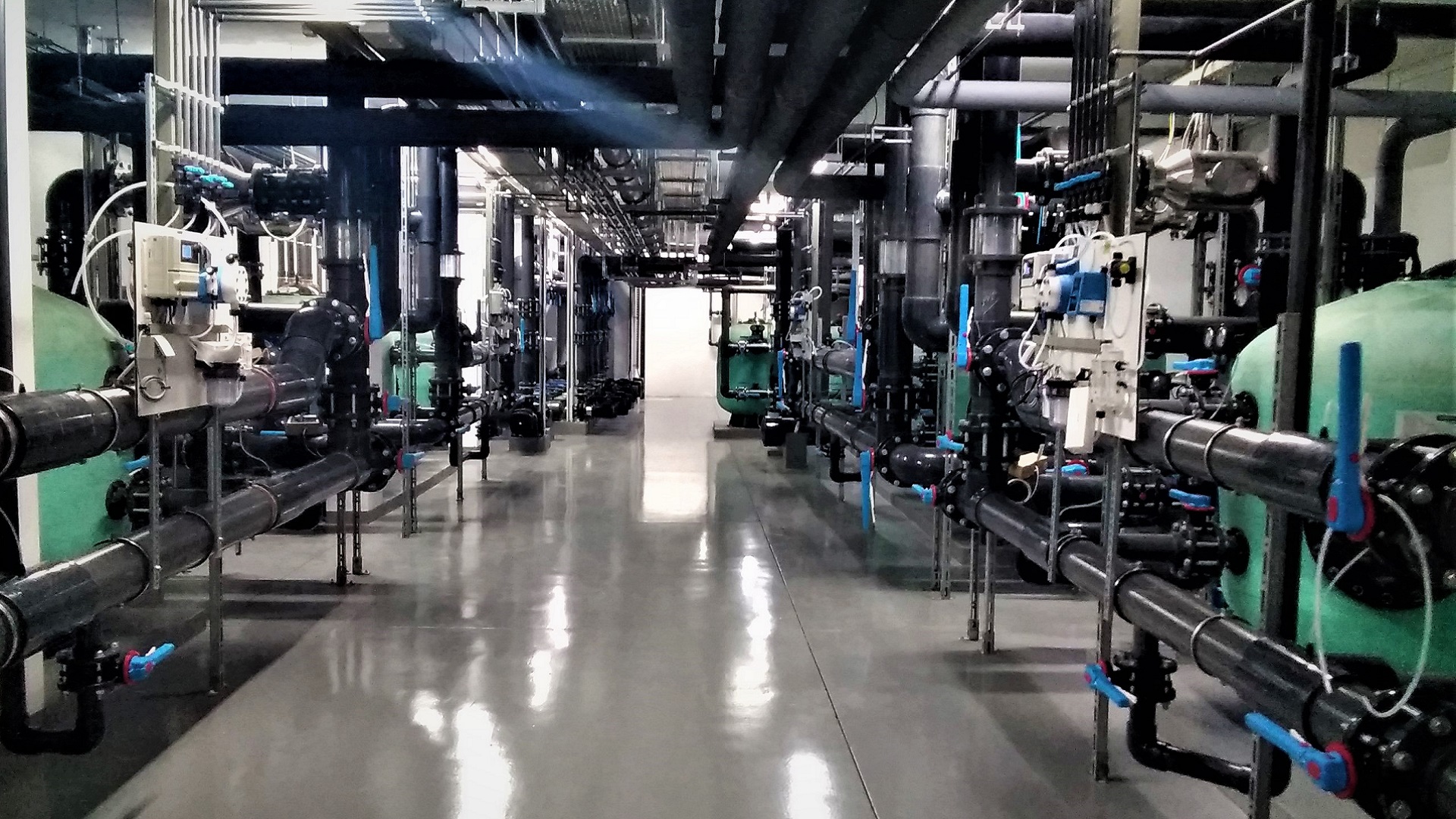Cavitation can occur in hydraulic pipes in water parks and swimming pools. It is a phenomenon closely related to vapour pressure, so to describe it, we will first define vapour pressure.
-Vapour pressure: corresponds to the pressure at which the liquid and vapour phases of water are in equilibrium at a given temperature, and is a characteristic that makes it possible to assess its volatility.

Figure 1: Diagram of water phase.
Figure 1 represents the phases of the states of water, where:
p: pressure (in atmospheres)
T: temperature (in degrees Celsius).
A: water (liquid phase).
V: water vapour (gaseous phase).
H: ice (solid phase).
As we have said, the vapour pressure depends on the temperature and its variation occurs according to the red curve in the diagram in Figure 1. Now we can undertand cavitation.
-Cavitation: is a phenomenon whereby vapour pressure is reached in a mass of water, not by an increase in temperature, but by a decrease in its pressure.
For example, in a pressurised pipe, such as the full-section pipe of a water park or swimming pool, a considerable decrease in pressure can occur for various reasons. This pressure drop could be so sudden that the water reaches vapour pressure as a result. In this situation, the liquid water is transformed into water vapour, which leads to an increase in volume. The increase in volume leads to an increase in pressure, so that the mass of water again reaches a higher pressure than the vapour pressure and therefore returns to the liquid state. This will again produce a decrease in volume and, therefore, a decrease in pressure, to the point where the vapour pressure is reached again, which will produce a repetition of the phenomenon.

Figure 2: Diagram of the fluctuation of water pressure.
In Figure 2 the fluctuation of water pressure in regards to the vapour pressure point is shown graphically, where:
p: water pressure.
pv: vapour pressure.
t: time.
(+): areas corresponding to situations where the water pressure is above the vapour pressure, resulting in vapour condensation and a drop in water pressure.
(-): areas corresponding to situations where the water pressure is below the vapour pressure, generating water vapour in the form of bubbles, with a corresponding increase in volume, resulting in a consequent increase in pressure.
As we can see, cavitation is a cyclical phenomenon. With successive rises and falls in pressure, the periodic formation of water vapour bubbles occurs. This is an undesirable phenomenon, with a pernicious effect on hydraulic pipes. Over time, due to cavitation, these pipes will become pitted and corroded.
Figure 3 shows the devastating corrosion effect of cavitation on a centrifugal pump impeller.

Figure 3: Corrosive effects of cavitation.
This is a phenomenon that must be avoided when designing a water park or swimming pool and calculating its hydraulic installations. To do this, it must be ensured that no working pressures are so low that they reach the vapour pressure. In future articles, we will look at the situations and areas most susceptible to cavitation in the hydraulic installation of a swimming pool or water park.
By Luis Llor, Senior Hydraulic Engineer in Amusement Logic’s Architecture Dept.






